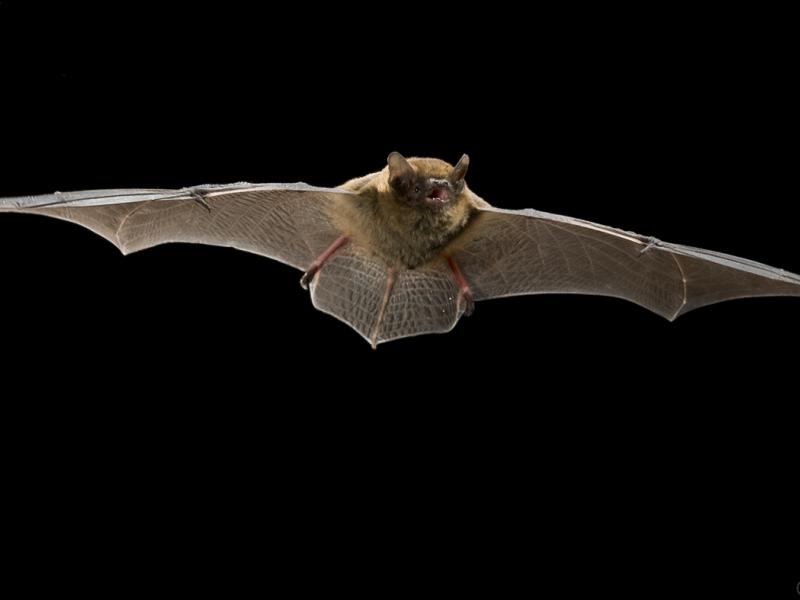Migrating bats at the southern North Sea
Bats experience a fatality risk at wind turbines. Since some species migrate not only over land, but also on sea, off shore turbines might pose a threat. To be able to assess the impact of potential added mortality on sea, it is necessary to know or estimate the population size of bats, including the portion of the population crossing the sea. Potentially relevant species are Nathusius’ pipistrelle (Pipistrellus nathusii), Noctule (Nyctalus noctula) and parti-coloured bat (Vespertilio murinus).
The current study aims at developing a prototype estimator for migrating populations of bats. This is based on data, or estimates, regarding the size and bandwidth of source populations, population dynamical factors defining such populations, and factors defining migration fluxes. Acknowledging the rareness of such data, a flow model is constructed targeting a preliminary estimate for the southern North Sea (SNS). However, the approach can be adapted for other regions/study areas as well.
The model is based on available information and data regarding bat species in the different countries bordering the SNS. This includes countries further of which might be ‘source countries’ of bats that eventually might fly on the SNS.
The approach to the estimation of basic data, as well as the flow model, was a cyclical process together with members of a design team of those countries. Together with other contributing colleagues from their region information and data were brought together. Information on the non-availability of data, or knowledge gaps are, an important part of the result.
The flow model consists of a series of interconnected excel sheets incorporating the basic data for the countries and fluxes. In the current model parameters used per country are: population size of males, females and juveniles (M, F and J), the percentage of migrating individuals (M, F and J), percentage migrating towards different connected countries in the west/southwest direction, percentage migrating over land/sea, as well as generic factor parameters: basic population dynamical factors such as J/F and satellite males/male.
Currently the model focusses on the Nathusius pipistrelle, because this is the species where some information and data are available. Even for this species quantitative basic estimates on source populations were only available for RO Ireland, UK (specifically for England and northern Ireland) and the Netherlands.
The model produces a preliminary estimate for on the SNS roughly 40.000 individuals with a bandwidth of between 100 and 1.000.000 individuals. The accuracy of this outcome can (and must) be improved through assessment of (more accurate) data and/or estimates per country/region, to improve the different factor components per country, to define the now generic factor components as components per country, and to incorporate mortality during migration.

